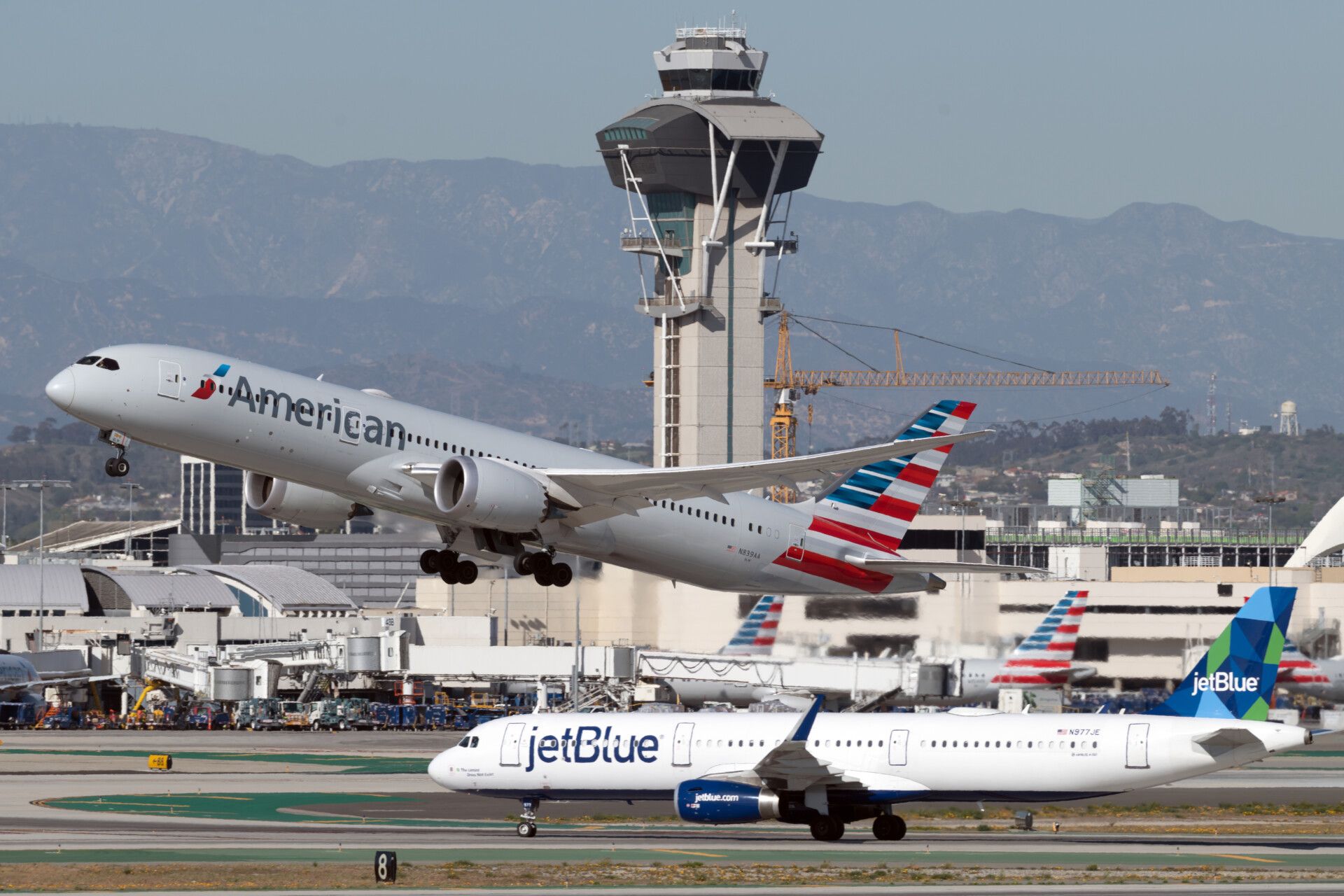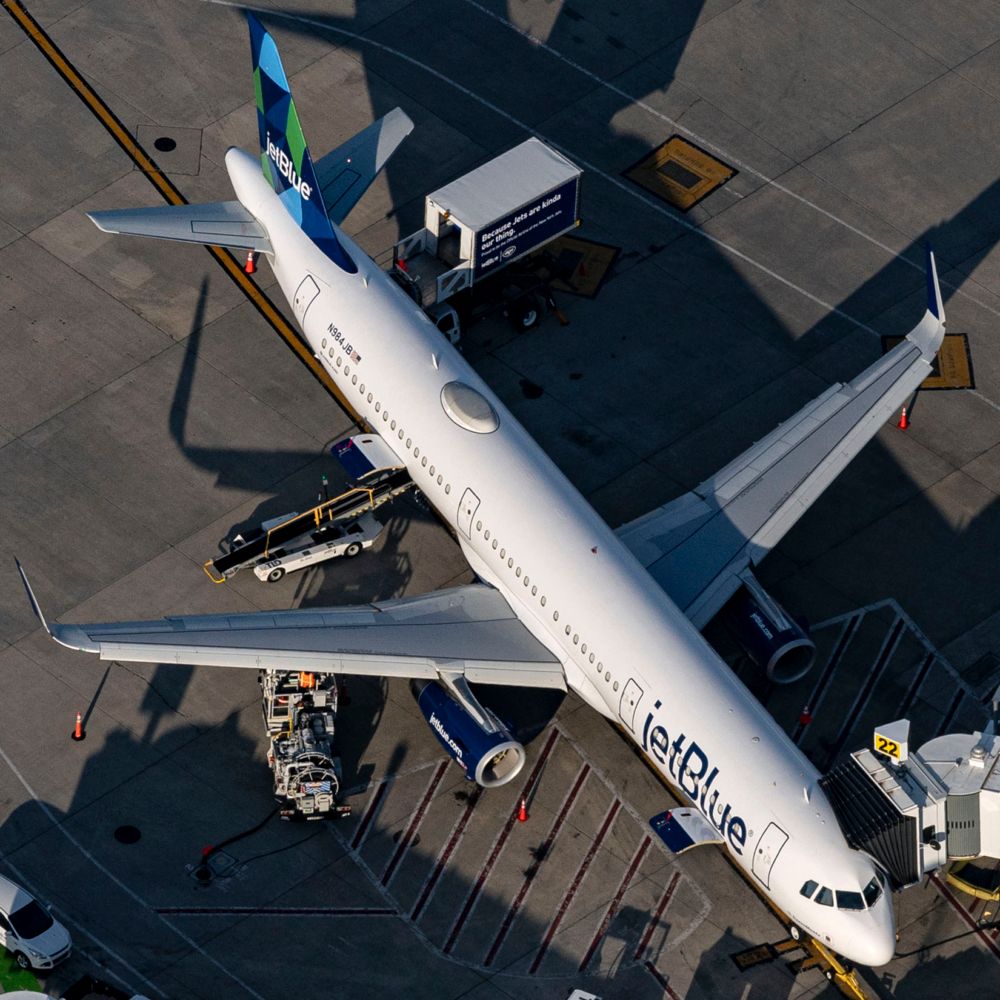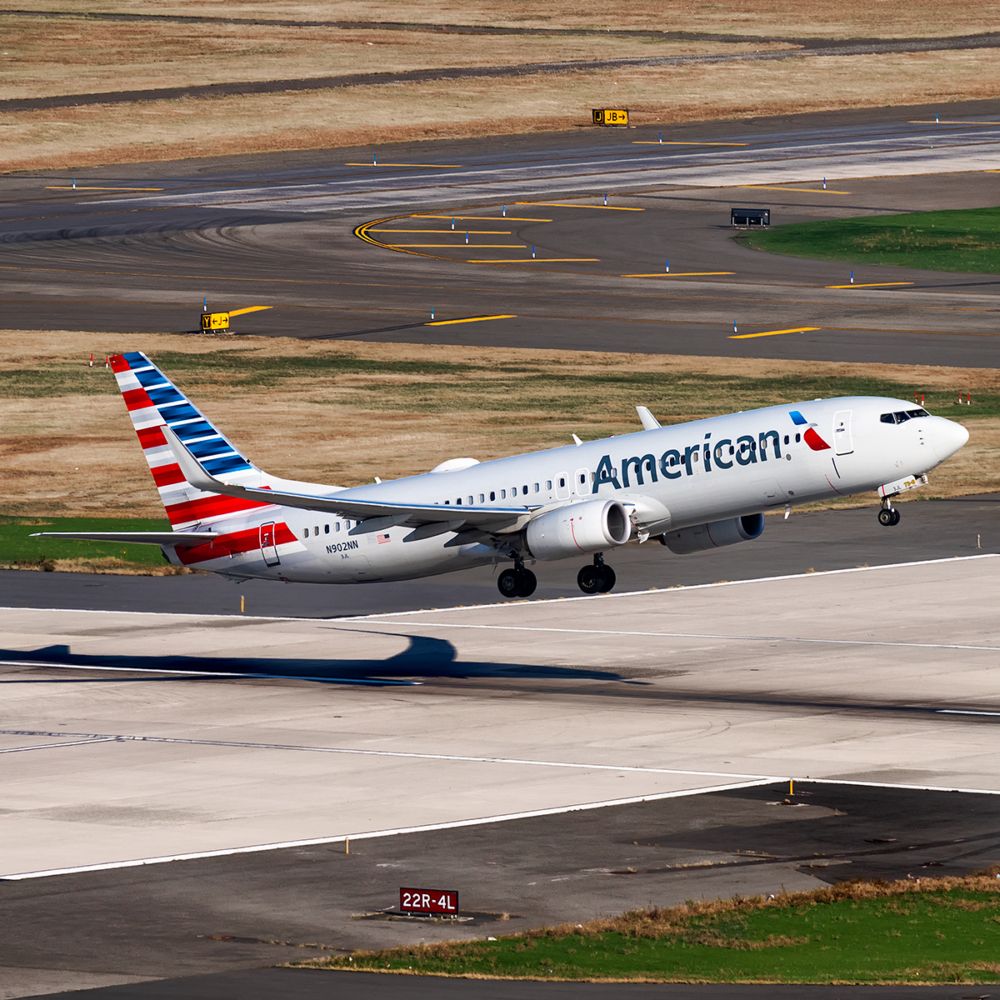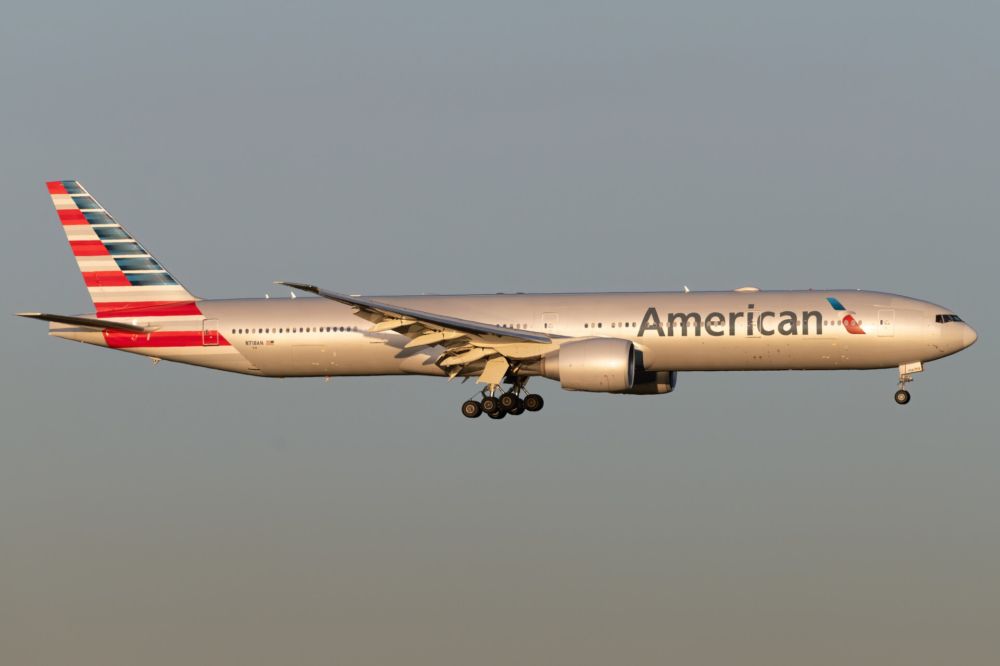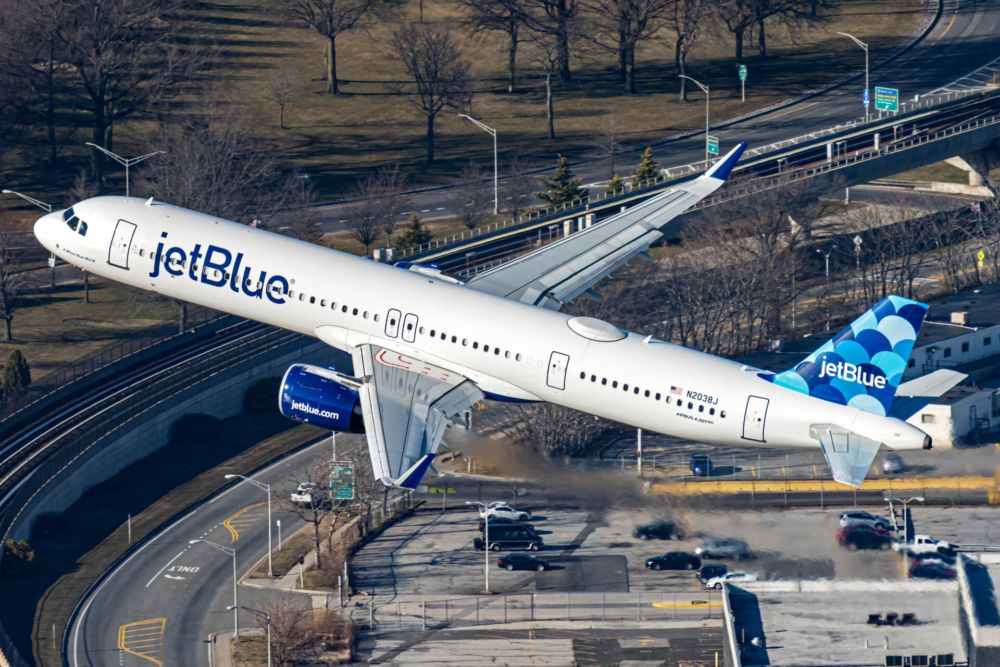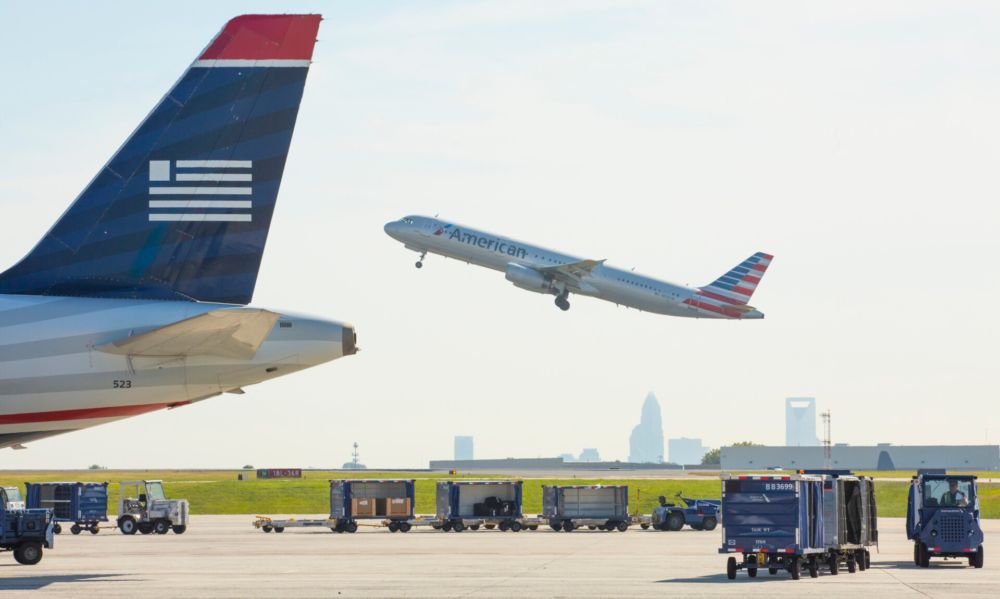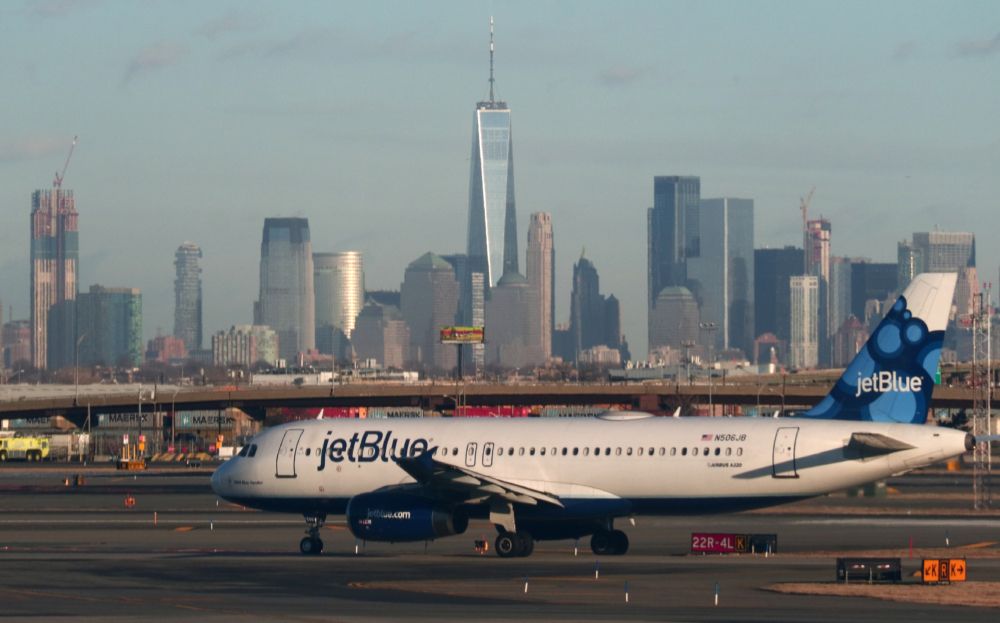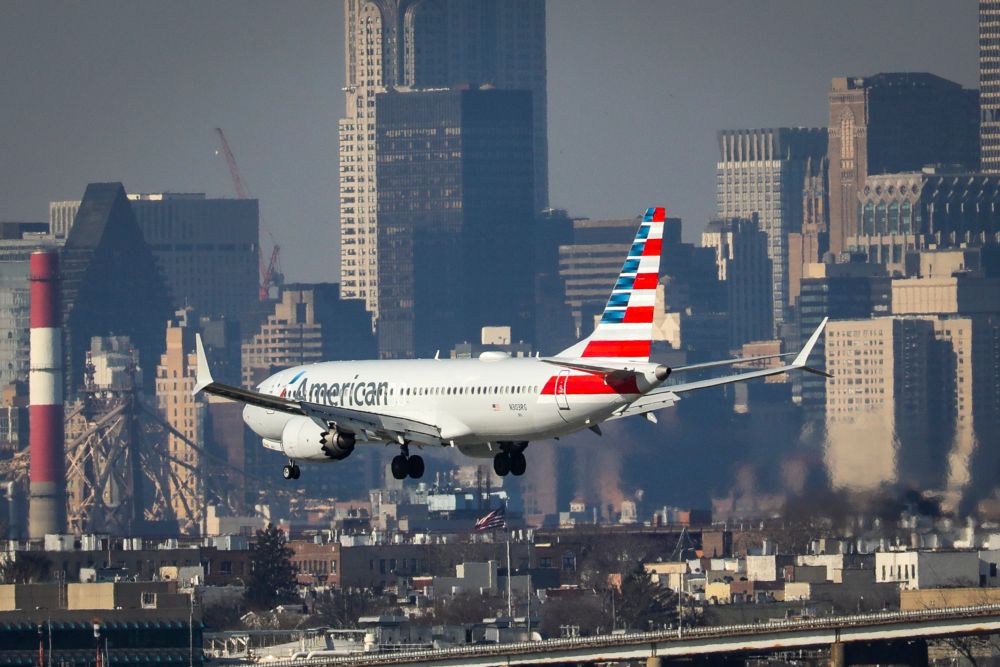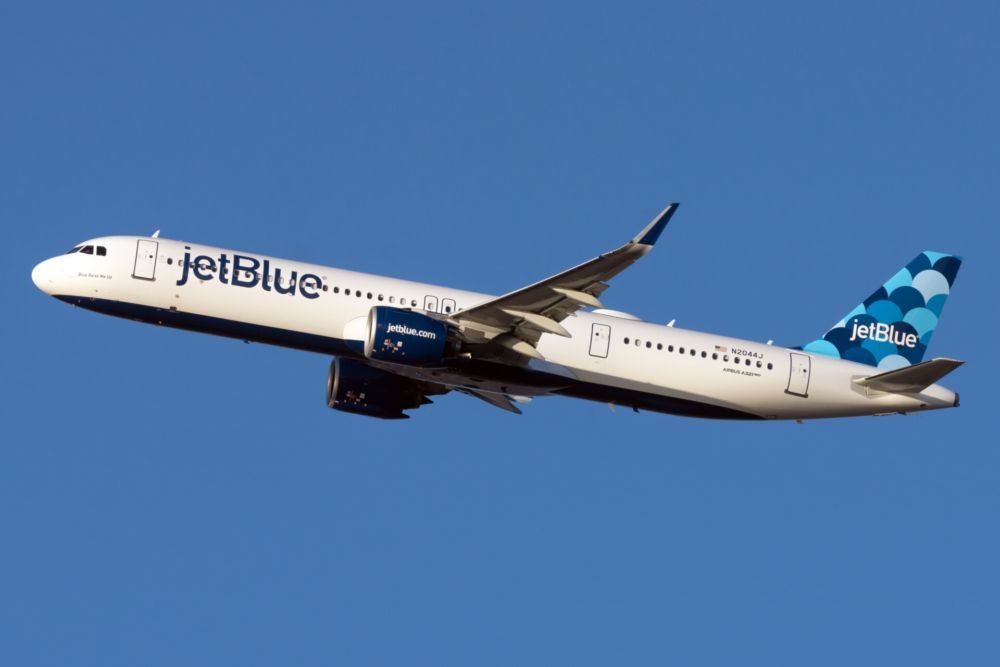The United States Department of Justice (DOJ) has formally filed a lawsuit against American Airlines and JetBlue over the Northeast Alliance (NEA). The bizarre lawsuit alleges antitrust violations over the two airlines consolidating operations under a Department of Transporation (DOT)-approved partnership. The government claims that the alliance will lead to reduced competition, counteracting competitive forces that have led to lower fares and higher quality services.
The DOJ sues American-JetBlue
The DOJ announced today a lawsuit against American Airlines and JetBlue. It is part of a recent focus from the US government on promoting competition in the economy, with a current aim on the airline industry. According to the DOJ, American, Delta, United, and Southwest are the largest airlines in the US and collectively control over 80% of domestic air travel.
One of the concerns of the DOJ is that the partnership limits competition and is part of an alleged continual trend from American Airlines toward increased consolidation. JetBlue formerly counteracted some of those trends by coming into major markets and offering lower fares and more nonstop options.
The DOJ alleges that JetBlue has been an independent, disruptive competition that has led to lower fares in New York City and Boston. As evidence of that, American Airlines sought to build back in Boston to "win" it back with new flights, more capacity, and new gate acquisitions. JetBlue was also looking to expand. In the lawsuit, the government quotes a JetBlue network planning executive as stating,
"One of the most common trends in JetBlue's 20 year history is easily stealing share from AA [American] and eventually winning. So that applies to PHL [Philadelphia] and MIA [Miami]."
In addition, there are JetBlue's long-haul ambitions. The airline has announced new nonstop service between Boston and London. The DOJ alleges that American had internal worries that Boston-London fares would drop by "50-60%" when JetBlue entered the market.
This leads to the DOJ's alleged conclusion that American Airlines is now seeking to consolidate and eliminate a competitor by allying with JetBlue. This includes unnamed American senior executives identifying domestic consolidation as a potential value for the alliance.
The DOJ alleges that the suppression of JetBlue extends beyond Boston and New York. It believes that the Northeast Alliance "will significantly dampen JetBlue's incentive to continue to compete with its much larger partner in the Northeast and beyond." The DOJ has painted a quid pro quo situation where JetBlue benefits from doing what American wants outside of the Northeast Alliance by gaining access to American's infrastructure in the Northeast and taking over JetBlue's routes.
American and JetBlue respond
American Airlines CEO Doug Parker stated the following on the lawsuit:
“Before the alliance, Delta and United dominated the New York City market. The NEA has created a third, full-scale competitor in New York and is empowering more growth in Boston. Ironically, the Department of Justice’s lawsuit seeks to take away consumer choice and inhibit competition, not encourage it. This is not a merger: American and JetBlue are – and will remain – independent airlines. We look forward to vigorously rebutting the DOJ’s claims and proving the many benefits the Northeast Alliance brings to consumers.”
JetBlue CEO Robin Hayes also had strong words for the lawsuit in a letter to the airline's employees:
"While we have built a successful business in both New York and Boston, our runway for growth in the Northeast to challenge global legacy carriers Delta and United is limited. And I’m sad to say that our biggest obstacle to bringing more low fares and great service to the Northeast right now is the DOJ – the very government agency that should be making every effort to foster robust competition among airlines."
Stay informed: Sign up for our daily and weekly aviation news digests.
Dissecting the DOJ's complaint
First, on the matter of domestic consolidation, this has been a trend in the airline industry. American and TWA merged in 2001. In 2005 America West and US Airways merged. In 2008 Delta and Northwest merged. In 2010 United and Continental Merged. In 2011 Southwest and AirTran merged. In 2013 US Airways and American merged. In 2016 Alaska and Virgin America merged. As is evident, mergers have been somewhat common in the last two decades. Both are still hubs and are expected to get new and expanded services over the next few years.
While the consolidation has led to some higher fares, the DOJ has primarily been concerned about a reduction in overall capacity. In 2006, then-CEO of American Airlines explained a link between removing seats and raising fares. Post the America West and US Airways merger, there was a 3-4% industry capacity reduction, according to a post-merger analysis by US Airways.
While other mergers have led to complete cuts of hubs – like the end of Memphis and Cincinnati hubs post-Delta/Northwest and Cleveland post-United/Continental, American's merger with US Airways did not lead to any hub cuts. While some flights were cut from Philadelphia and Phoenix, the airline still maintained a heavy presence in both cities.
Even then, the Northeast Alliance has built-in capacity targets. During the calendar year 2022, American and JetBlue have to operate a combined seat capacity in New York (JFK) and LaGuardia (LGA) of 105% of their combined seat capacity from baseline numbers in 2019 and 2018. In 2023 and 2024, that has to reach 110% and then 115% by 2025, so there is no argument for the alliance as precursor capacity reductions. JetBlue is even delaying Embraer E190 retirements to support growth under the NEA.
For example, JetBlue is bumping up its flying to over 200 daily departures from JFK compared to pre-NEA daily flights. At LaGuardia, the airline is going from a paltry 16 daily departures to 50-60. At Newark, JetBlue goes from 35 to 70-80 departures. Finally, in Boston, JetBlue goes from 180 to 210-230 daily departures.
American Airlines has primarily added new long-haul international routes. This means flights to Tel Aviv, Athens, and New Delhi – among others. In fact, American recently upgauged its planned flights from New York to New Delhi.
Another DOJ concern was that American would impact JetBlue's ability to grow elsewhere. This has not proven to be the case. In fact, JetBlue has launched and expanded services from Miami – an American Airlines hub – as well as Los Angeles – another American Airlines hub without any "retribution" in New York or Boston.
Even JetBlue's long-haul flying has remained untouched. JetBlue has launched nonstop flights between New York and London, with more flights planned and a new Boston to London link also coming. Those flights are still on the books, and JetBlue is still looking forward to new flying to Europe in the coming years.
While there are some legitimate reasons for a thorough investigation of the alliance, and several airlines, including Spirit and Southwest, have urged a further review, the NEA has many benefits for consumers. United and Delta dominate in New York, with Delta dominating at JFK given its short- and medium-haul presence in addition to long-haul operations. Meanwhile, United has a similarly strong presence at Newark in New Jersey.
While JetBlue provides intense competition in the short- and medium-haul segments, it cannot effectively compete on long-haul routes. Its only transatlantic route is to London. Even then, the airline is planning on using Airbus narrowbodies to connect the US with Europe, which sometimes seat only half as many passengers per flight as an operation by Delta or United.
American Airlines provides JetBlue with more long-haul feed from New York, including destinations that JetBlue will never be able to serve with an Airbus A321LR or A321XLR like Tel Aviv and New Delhi. In addition, JetBlue gives access to more short- and medium-haul feed to American Airlines in New York that American cannot provide, in part due to slots.
If the NEA is terminated, the biggest beneficiaries are Delta Air Lines and United Airlines, which dominate the area already. JetBlue is a strong competitor but falls short in the international sphere. Combined with American Airlines, the two offer a viable third alternative in New York City. Before the crisis hit, American Airlines was a weak airline in New York compared to United and Delta. Without the NEA, the carrier is likely to shrink significantly.
Not to mention, United and Delta are already responding. With JetBlue adding new services out of Newark, United is responding with a proposed flight between Boston and London-Heathrow. In addition, Delta has been upgrading services, including moving Boston to Los Angeles – a route that sees premium service from JetBlue and American – to all lie-flat seating, which is something it did not offer before. Delta is also planning more capacity out of Boston next year.
JetBlue has even forged ahead on some of its planned improvements to its services. For example, the airline has continued to offer complimentary inflight entertainment via seatback screens. It also refreshed its business class product, called Mint, with new hard and soft product offerings.
Both American and JetBlue are adding more capacity and new flights out of Boston and New York. While there have been some setbacks in terms of the routes they can launch due to the ongoing crisis, growth is still on the horizon. For example, travel restrictions for Europeans to enter the US are not expected to come down until November. In response, until then, JetBlue had to cut down on its London schedules.
The lawsuit is bizarre in the sense that the American-JetBlue alliance helps create a viable competitor to passengers who are keen to fly with a single airline or airline alliance out of New York or Boston – all while both airlines are still expanding across the country in cities outside the Northeast, albeit separately and not in conjunction with each other.
What do you make of the DOJ's lawsuit against American and JetBlue? Let us know in the comments!

